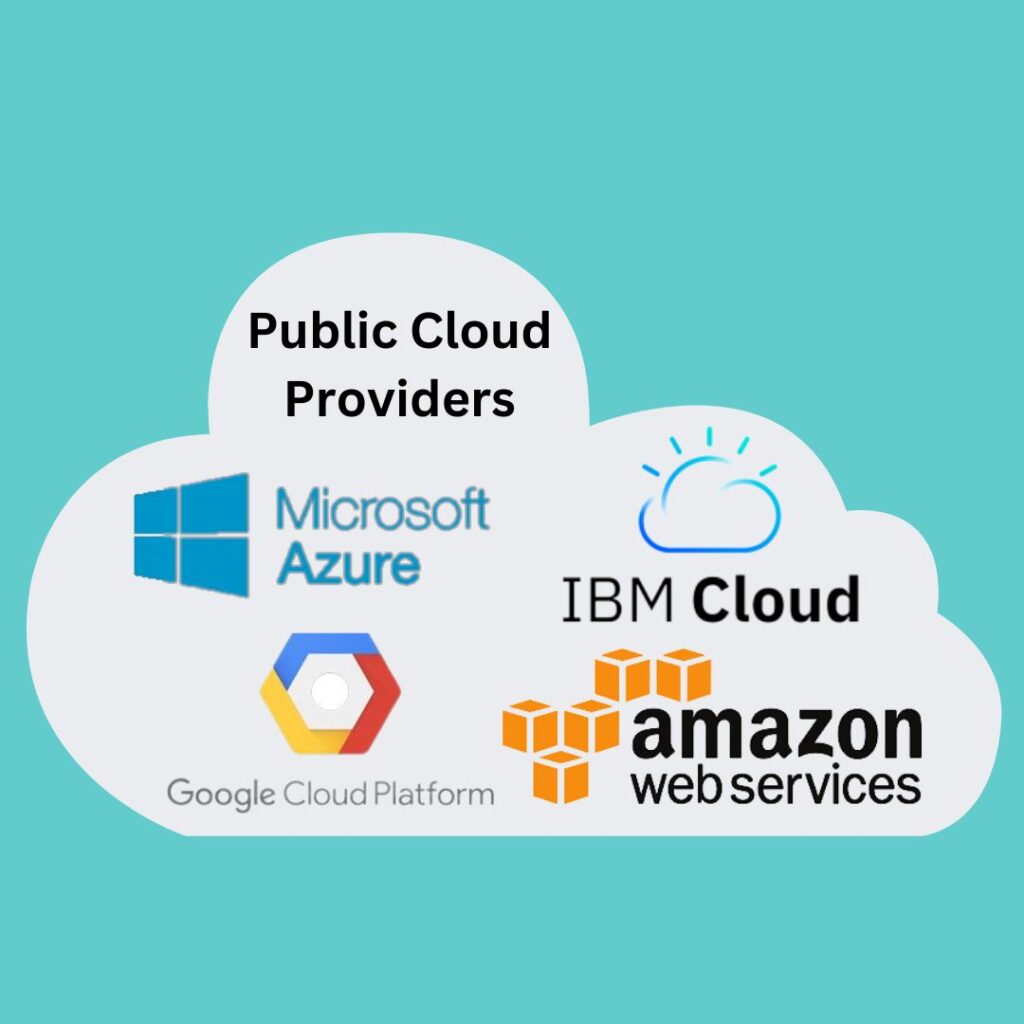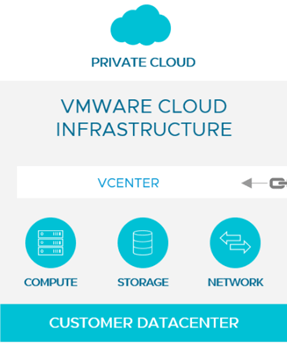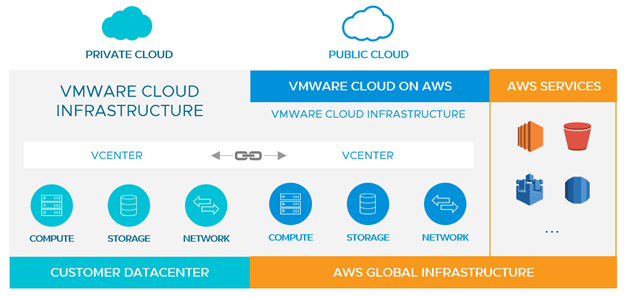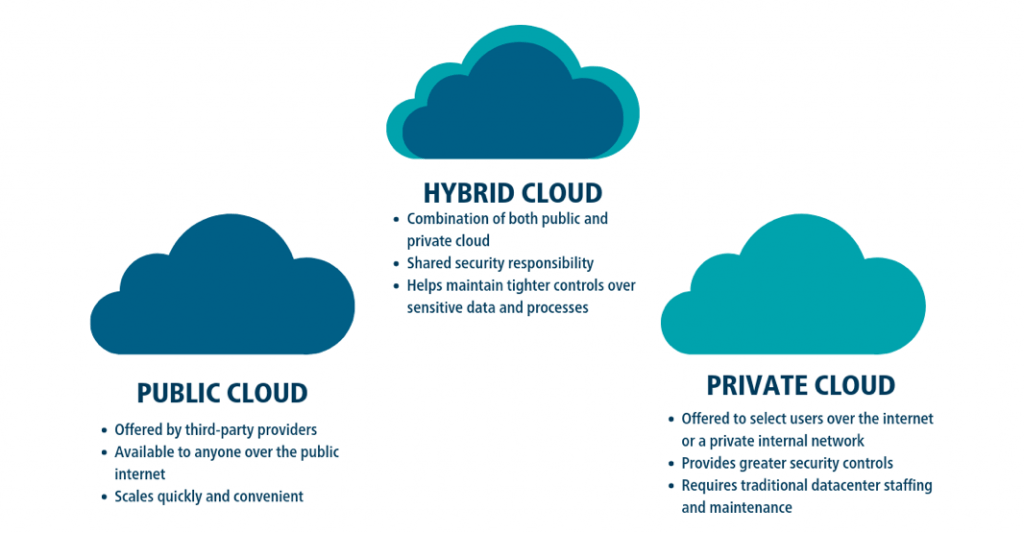5 Reasons To Transform Business Applications To The Cloud.
Why Is Cloud Important?
For today’s modern applications the cloud infrastructure is essential for automation of Day 1 & Day 2 requirements, on-demand scale-up/scale-out, Granular level visibility & control, single pane of glass management & operations.
What Are The 3 Types Of A Cloud Models?
Public Cloud – The banked infrastructure is managed by the service providers. Anyone can subscribe to the services and can access the resources from anywhere in the world.

Private Cloud – This infrastructure is managed & consumed within the organization. The below image is an example of a private cloud.
Hybrid Cloud – It is a combination of public & private clouds. This type of infrastructure is best suited for mixed workloads (predictable & unpredictable). The unpredictable workloads can be placed on the public cloud and predictable workloads can be placed on a private cloud.
Why Should You Transform Your Business Applications To The Cloud?
Invisible Infrastructure
The back-end infrastructure is invisible to the end-users. They can request the services/resources in just a few clicks through the self-service portal, which is user-friendly, automates the complete process, can manage the services/resources.
Reduces The Development Life Cycle
The cloud infrastructure automates the completed process right from the provisioning to the de-provisioning of the resources. The end users can request the resources through a self-service portal. Once the request is approved the provisioning will happen automatically and the end-users can access the resources after the provisioning is successful. For any additional services/modifications of the existing resources, the end-users can request for the same through the self-service portal itself.
This complete automation process eliminates manual installation, multiple dependencies and reduces the development life cycle.
Faster Time To Market
By modernizing the backend traditional infrastructure with the cloud infrastructure, the development life cycle will be drastically reduced from few months to just a few days. This helps the organizations to introduce the product to the market in a faster time.
Reduces The OPEX
Unlike traditional infrastructure the cloud infrastructure is fully automated, dependencies from multiple teams are eliminated, rapid provisioning and de-provisioning of resources. By transforming to the cloud infrastructure, the scalability, management is simplified and helps the organizations to meet the SLA.
Better Return On Investment
We would strongly recommend every organization transform the business applications to the cloud infrastructure to be competitive in the market. Based on the organization size, no of workloads, nature of workloads the organizations can choose the type of cloud platform (public/private/hybrid). By investing in cloud infrastructure, organizations can achieve better ROI in just a few months.
Who Are The Market Leaders In The Several Types Of Cloud Models?
Public Cloud – Amazon, Azure, Google cloud
Private Cloud – VMware, Azure stack HCI, Open stack
Hybrid Cloud – VMware, Microsoft Azure, Nutanix
How To Start Your Cloud Transformation Journey?
For public cloud, you can reach out to the public cloud partners in your region for better pricing as compared to direct subscription.

To know more about the list of services/ resources offered by public service providers. Please visit the below mentioned websites.
Azure – Cloud Computing Services | Microsoft Azure
AWS – Amazon Web Services (AWS) – Cloud Computing Services
Google Cloud – Cloud Computing Services | Google Cloud
To Set Up A Private Cloud For Your Organization.
Sizing
The first step is to analyze and arrive at the hardware resource requirements for the cloud infrastructure
Choose The Hardware & Cloud Platform
Here’s are the best hardware & cloud platform.
1. Dell EMC Vxrail + VMware cloud suite
2. Azure Stack HCI
3. Nutanix HCI + Nutanix Calm
4. Dell EMC Vxrail + Open stack
Solution Design: The solution design is especially important. All the design considerations, key integrations, the high-level and low-level design should be part of the solution design document.
Implementation: In this stage, the racking, stacking, POST, hardware platform setup, cloud platform setup, Workflow design, 3rd party integration, testing will be a part of the implementation
Go Live: Once the private cloud platform is ready for end-user consumption the organization can publish the private cloud self-service portal to the end-users.
To set up a hybrid cloud infrastructure both private & public cloud infrastructure is required. I would recommend the organizations choose the OEM/service provider that offers both private and public cloud solutions.
Here are the market leaders who offer both public and private cloud solutions.
VMware
On premise offering: VMware cloud suite.
Cloud offering: VMware Cloud on AWS/Azure
Microsoft Azure
On premise offering: Azure Stack HCI
Cloud offering: Azure
Nutanix
On premise offering: Nutanix HCI + Calm
Cloud offering: Nutanix cluster on AWS
Do you wish to transform your business application to a public /private/ hybrid cloud platform for your organization? We are the proven professional service organization for cloud platform consulting, design & implementation. For any inquiries/assistance please reach us at [email protected] or visit our website https://zindagitech.com/ or call us at +919773973971.
Author
Leela Krishnan
Data Center Consulting Engineer
